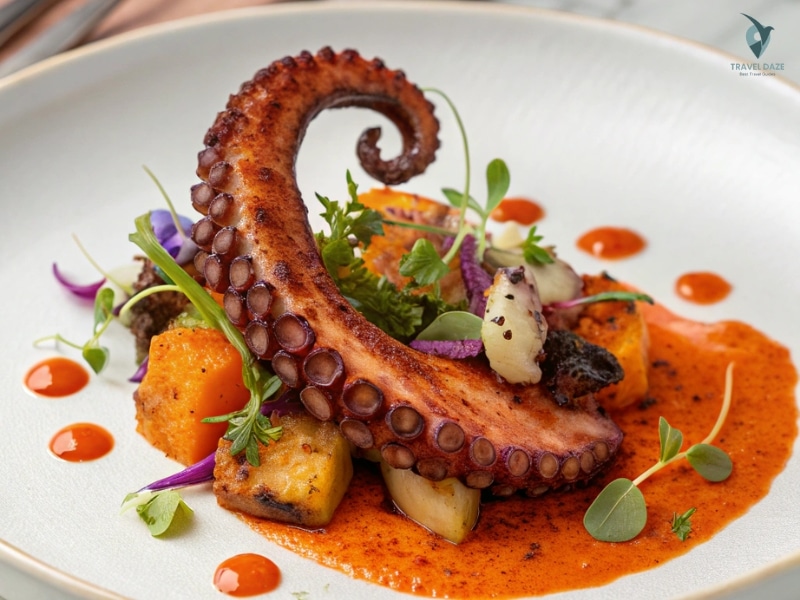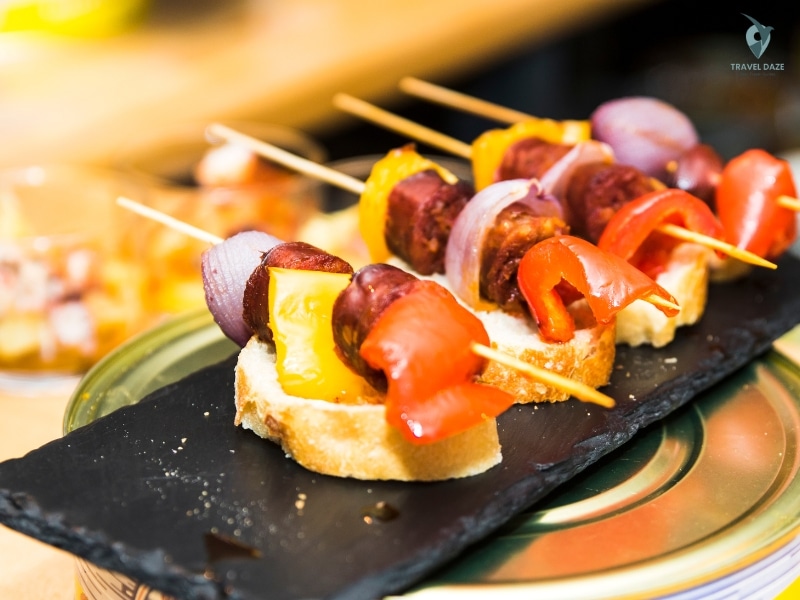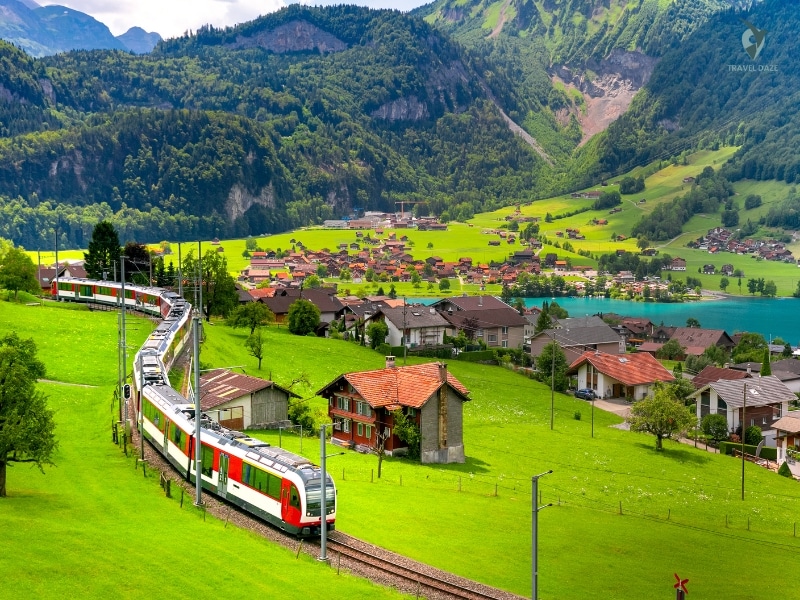I chased color, breeze, and stories across the city until my memory cards filled and the sun slid into the Atlantic—this guide points to the best photo spots in san juan with simple tips to shoot faster and wander more.
Table of Contents
ToggleI walk the blue adoquín and press my face to alleys where pastel balconies glow. The fort and the wall throw dramatic shadows at golden hour. Paseo del Morro delivers salt air and big skies; the small island hub rewards early mornings with quiet lanes and sharp light.
I plan shoots around trolley times and shaded plazas, then duck into cafés when the heat climbs. I note angles, safety, and timing so you move with confidence. Follow these cues, hit the icons first, and then let serendipity lead you to hidden corners that feel like discoveries.
Key Takeaways
- Start early: soft light and emptier streets make better images.
- Use the wall: it gives sweeping views and dramatic compositions.
- Walk small blocks: the compact city rewards curious feet and quick detours.
- Ride the free trolley: save energy and reach more locations fast.
- Pack for weather: shade, water, and a light cover protect gear and comfort.
Old San Juan’s pastel maze: cobblestones, color, and history in every frame

I slip onto cobbled lanes while the air is cool and the facades start to glow. The adoquín are blue furnace-slag bricks that lead my eye to plazas and the sea. I move slowly—there’s reward in a quiet walk.
Best light and timing on the blue adoquín streets
Start at dawn on Calle de la Cruz and drift toward Plaza de Armas as the sun warms pastel fronts. Mid-morning keeps shadows soft and balconies radiant. If heat builds, shift into shade along the wall and wait for blue hour.
Angles that flatter the city walls, garitas, and balconies
Angle low to stretch cobbles and lead the eye to distant garitas. For portraits, tuck subjects in front of painted doors, then step across the street for cleaner lines. Back up at Raíces Fountain and let spray catch the sun for bright bokeh.
Don’t-miss stops: La Fortaleza street art, Plaza de Armas, and Raíces Fountain
La Fortaleza surprises with overhead installations—look up and frame movement front and center. Swing by Plaza de Armas to watch musicians and umbrellas add life between shots. On Calle de San José near Calle San Sebastián, the Puerto Rican flag door pops—arrive early to take photos without crowds.
- Start on Calle de la Cruz, then drift toward the plaza.
- Use low angles to connect cobbles with the wall and garitas.
- Save the waterfront for backlit bokeh at Raíces Fountain.
El Morro’s wind and wide horizons at Castillo San Felipe del Morro
I park at the gate as dawn breaks and feel the ocean wind pull at my jacket—El Morro opens like a wide sky waiting to be framed. The 16th‑century citadel and its Victorian lighthouse soar above turquoise water, and the esplanade hums with gulls and kite strings.
Iconic shots: I crouch low on the grass just after opening; dewy blades, a lone kite, and the tower catch the first warm light. Weekends fill the field with kites—I use low angles so their strings lead the eye toward the fort.
I frame the lighthouse with a sliver of wall and the ocean horizon for scale. When the sun is harsh, I move into shaded corridors or step into doorways to balance bright sky and dark stone. From the bay side, long views show the wall and white surf—clean, timeless lines.
- I bracket exposures when sun and shadow clash, then blend for rich detail.
- Sunset warms the stones—face west and wait as the sky turns mango over the Atlantic.
- I highly recommend a calm weekday photoshoot: wind whispers, crowds thin, and staff are helpful.
Castillo San Felipe del Morro: quick timing tips
Take final frames at blue hour—lighthouse silhouettes and city lights make a quiet, memorable close to the day. National Park entry covers El Morro and Castillo de San Cristóbal for a week, so plan a return for different light and moods.
Castillo de San Cristóbal: rugged lines, sweeping lawns, and a World Heritage feel

I arrive before sunrise and walk the long ramps of Castillo de San Cristóbal. The fort spreads across 27 acres—bigger than El Morro—and its scale changes how I compose shots. Dawn often places the sun behind or beside the bastions, so I scout quick angles while the grass still holds cool shadows.
From the lower lawn I tilt the lens up and let bastion edges cut the sky for a great photo. Wind is constant here; flowing clothes or hair add motion, so I lean into it for portraits. Inside, tunnels give rough texture—frame an exit with a sliver of sky and a subject front and center.
Midday, I move to shade along the wall to tame glare and keep colors true. If clouds stack, I switch to vertical frames so the fort towers against drama. I highly recommend a fast photoshoot loop before tour groups arrive, then hop the trolley and keep exploring the city.
- Arrive near sunrise for warm facades and cool shadows.
- Use lower lawns for dramatic upward angles.
- Take slow laps across levels—arches, battlements, and ramps remix each time.
Santurce Art District: bold murals and creative energy on every block

I duck into Santurce for quick runs of color—every block feels like an invitation to try a new angle. The area pulses with murals, boutiques, and small eateries that invite short stops and longer sessions.
Where to find vivid walls and clean backgrounds for portraits
I scout early while light is soft and streets are calm. Colors stay true and shadows stay gentle.
Quick rules I use:
- I look for long murals with open sidewalks so a subject stands out at the front without clutter.
- Corners with recessed doors give instant shade and a clean backdrop for portraits.
- I shoot perpendicular to the wall to avoid distortion, then angle slightly for depth and motion.
- For a couple, I add movement — walk-and-smile, spin, or lean-and-laugh against the paint.
- I highly recommend neutral outfits so the art does the shouting while you breathe in color.
I take photos wide for context, then step closer for texture and paint strokes. Snack breaks matter—cafecito and alcapurrias nearby keep energy high between sets.
Tip: I drop a pin after each keeper location so I can loop back if clouds shift or a light change calls for another pass.
Beach vibes near the city: Condado’s turquoise curve and Piñones’ sabor
I wake before dawn to trade city noise for the hush of waves and the soft pastels along Condado’s shore. The water glows turquoise; the sand feels clean underfoot. It’s a short ride from Old town and worth the early rise.
Golden-hour color, palm silhouettes, and candid food moments
Golden hour lifts skin tones and makes the sea sing. I place subjects near the foam edge and time frames with receding waves for clean footprints. Low angles let tide pools mirror the sky—perfect for a great photo.
Piñones has rhythm—street stands, empanadillas, salsa from speakers, and long boardwalk stretches. I weave food into sets: laughter, hands, a bite, the steam and salt all tell a story.
- Timing: I hit Condado at sunrise; empty sand and soft light help composition.
- Gear: Minimal—wide lens, polarizer, sandals you can kick off fast.
- Couples: Walk the waterline hand in hand for candid motion shots.
Street icons and local legends: Puerto Rican flag doors, Calle San José, and La Perla
I time my stroll to catch that soft hour when painted doors glow and streets breathe easy. Arrive early for cleaner fronts, gentler contrast, and the patience to wait for a clear lane.
Where to start: The big Puerto Rican flag mural sits about 300 feet south of Calle San Sebastián on Calle de San José. I reach Calle de San José before rush hour for the black flag door—soft light, no lines. The classic rican flag door is nearby; I shoot tight for texture, then step back for the full facade.
Black & classic flags on Calle San José and Calle San Sebastián
On Calle San Sebastián I pivot to catch balconies and flags fluttering down the street. I keep subjects centered at the front of a door to avoid leaning edges. Time your frames between passersby & parked cars—patience pays clean results.
Safety note & respectful shooting around La Perla
La Perla sits between El Morro and San Cristóbal—treat it with respect. Ask before portraits, keep gear low-key, and move with a smile. I skip La Perla after dark; safety first, always. Short photoshoot windows work best here—arrive prepped, shoot quick, and leave no trace.
- I drop a pin at each mural location so I can return if light improves later.
- Bring minimal gear, plan your time, and be courteous to neighbors.
- Tip: a quick scout walk helps you find the cleanest front and the best angle fast.
Plazas and viewpoints made for golden hour: Plazuela de Rogativa, Raíces Fountain, and beyond
As the sun leans toward the bay, I wander to high terraces where color and breeze meet at the horizon. Plazuela de Rogativa sits near La Fortaleza with a wide, 180-degree view of water and sky—its bronze statue makes a striking silhouette at golden hour.
I set up wide here to hold the wall, water, and sky together, then move closer for torch and hand details. At Raíces Fountain on Paseo de la Princesa I stand back to keep spray crisp while the sunset paints the background.
Along Casa Rosada I line the wall in front of La Fortaleza and wait for blue hour to bloom. The red city gate, warm lamps, and the curve of the walls give layered depth after dusk. I steady my camera on a railing when I skip a tripod—small tricks, big returns.
- Quick loop: Rogativa for glow, fountain for flare, wall for blue hour—minimal walking, maximum payoff.
- Angles: shoot wide for context, then tight for texture and hands.
- Evening note: Plaza de Armas offers people-watching, music, and easy portraits as the night begins.
photo spots in san juan: my must-shoot shortlist
I lean on a compact route that packs color, history, and horizon views into one walkable loop. I list what to hit and why—fast, clear, useful.
Must-hit locations & why they work:
- El Morro lighthouse & kites: wind, grass, and ocean lines deliver a great photo with minimal fuss.
- Castillo de San Cristóbal: tunnels and lawns give texture, symmetry, and clean dawn light.
- Plazuela de Rogativa: sunset silhouettes and sweeping bay views—perfect for drama.
- Raíces Fountain: golden spray, backlit joy, and instant mood.
- Plaza de Armas: people, music, and candid moments that tell a story.
- La Fortaleza street: overhead installations and pastel fronts that frame portraits.
- Santurce murals: bold color blocks and crisp backgrounds for quick sets.
- Condado & Piñones: palms, waves, and street food scenes for variety.
- Calle de San José flag door: iconic front—arrive early for clean frames.
- Paseo del Morro: wall, garitas, and long-water perspectives that anchor wide shots.
I highly recommend saving one photoshoot slot for blue hour—Old San glows and small island lights start to pop. Follow this shortlist, keep gear light, and let the city surprise you.
What to bring and when to shoot: walls, sun, and camera-ready tips
I like to start with gear that moves as fast as my feet—then chase the best light through narrow lanes. Pack light, stay cool, and plan short loops by time of day.
Wide-angle, travel tripod, and a polarizer for deep Caribbean skies
I pack a wide-angle lens, a travel tripod, and a polarizer. The polarizer deepens the sky and tames glare on the wall and water. I also bracket HDR when contrast is high and blend later for detail.
Beat the heat: hat, water, and shade-savvy routes
Heat is real—drink water, wear a hat, and take shade breaks. I stitch routes through narrow street shade, then pop into light for quick bursts.
Free trolley, walkable routes, and the best time of day for each area
The free trolley runs Mon–Fri 7am–6pm and Sat–Sun 9am–7pm, about every 15 minutes—perfect when legs complain. Sunrise works best at Castillo de San Cristóbal; midday flatters colored facades; sunset wins at Rogativa and the fountain.
- Quick kit: wide lens, polarizer, light tripod for steady camera work.
- Sample plan: sunrise at San Cristóbal, late-morning old city streets, sunset along the wall.
- Tips: book a blue-hour photoshoot at the front of La Fortaleza; avoid La Perla at night; use common sense and enjoy the day.
Conclusion
I step out with a small kit and a big curiosity; Old San Juan keeps rewarding that approach.
Every visit gives me new frames — bells, breeze, and changing light. I highly recommend one slow evening along the walls and one sunrise at Castillo San Cristobal for contrast and calm.
Chase kites at El Morro, then breathe at Plazuela de Rogativa as lamps glow. Couples should claim blue hour in front of La Fortaleza for a timeless photoshoot.
This World Heritage Site asks for care — move gently, ask often, and take photos with respect. Pack light, pick two or three spots, then wander; the city rewards curiosity and patience.
One clear takeaway: slow down, shoot less, look more — you’ll leave Puerto Rico with memory cards full of color and stories. Thank you — see you back here, same sun, new light, and your best shots yet.





